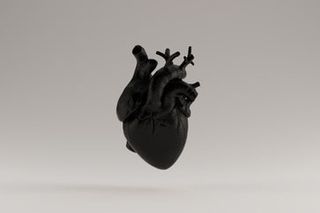
Why More Women Die of Heart Failure Than Men
For half of women experiencing heart failure, a heart attack isn’t the cause — but treatment for their problem doesn’t exist.

Women who experience heart failure die more than men with failing hearts because medicine has, for years, prioritized research and treatment of heart disease in men, assuming findings would directly translate to women; they don’t.
For half these women, their heart failure is not due to a heart attack, which is the most common cause of heart failure for men. It’s typically due to another manifestation of heart disease — long-running and untreated high blood pressure, which causes the heart to stiffen over time, Dr. Eva Gerdts, of the department of clinical science at the University of Bergen, in Norway, writes in a new paper published in the journal Nature Medicine. But treatment for heart failure from this cause doesn’t exist. So, practitioners treat these women for a heart attack anyway — with limited success.
For the other half of these women, who are experiencing heart failure due to a heart attack, their symptoms are often missed and critical treatment delayed, increasing the likelihood of death.
The reason behind both scenarios reveals the life-endangering effects of medicine’s male bias. Research on male subjects has long been the norm; indeed, female test subjects (even female rats) are a fairly modern phenomenon. Researchers and practitioners alike have traditionally assumed any discoveries made regarding male health would be directly transferable to women. Since heart attack is the most common cause of heart failure in men, treatments for heart attack abound. And men’s symptoms of heart attack have been studied ad nauseam — to the point they have become the standard of diagnosis for both men and women, even though women often don’t experience such signs.
Globally, “heart disease remains among the most common cause of death and reduced quality of life in women. Medically speaking, we still do not know what the best treatment for heart attack or failure is in many women. It is an unacceptable situation,” Dr. Gerdts said in a statement.
Related on The Swaddle:
To help correct the male bias in medical understanding of heart disease, Dr. Gerdts, along with Dr. Vera Regitz-Zagrosek, the director of the Institute of Gender in Medicine at Charité Universitätsmedizin, a university in Berlin, outlined in the new paper how heart disease risk factors such as obesity, diabetes and estrogen levels, play out differently in men and women.
Obesity rates are rising globally, which has special implications for women. Women are more likely than men to be obese; In India, where anywhere from 11% to 31% of the adult population is obese, women’s risk of obesity is “significantly higher” than men’s, according to a 2019 review of available research. Women are more likely to become obese with age than men, and obese women are three times more likely to have high blood pressure than normal-weight women. “This, in turn, increases the risk of heart disease,” Dr. Gerdts said. (Smoking, which more and more women are taking up to control appetite and weight, Dr. Gerdts added, also damages the heart.)
Obesity, in turn, increases the risk of type 2 diabetes — and women with diabetes are more at risk than men of heart complications and death, partially because of how their bodies store fat. “We know that women with diabetes 2 are usually obese and some of this fat is stored in the heart, which makes it more vulnerable for disease,” Dr. Gerdst explained.
Central obesity — that is, overlarge waist circumference in people with otherwise healthy BMI — is also a rising problem in India and for women, particularly, increases the risk of poor heart health.
And then there’s the hormone estrogen: In women, for most of their lives, estrogen has a protective effect on the heart. But after age 60, the risk flips: after menopause, when estrogen levels drop dramatically in women, their arteries gradually stiffen, leaving them more vulnerable to disease — which often goes unrecognized and untreated, even when it culminates in heart failure.
“We think that this is part of the explanation for why high blood pressure seems to indicate higher risk of heart disease amongst women,” Dr. Gerdts said.
But we don’t know for sure because research into the relationship between heart disease and estrogen in women is nascent. In women, higher levels of estrogen — the female sex hormone — are normal. In men, elevated levels of estrogen are considered ‘abnormal’ — and have the opposite effect as they do for women; rather than protect, high levels of estrogen cause men’s heart tissue to stiffen, making it harder for the organ to pump blood. It’s only very recently that researchers and clinicians thought to wonder what might happen when women’s estrogen levels drop.
“Men and women have different biologies and this results in different types of the same heart diseases. It is about time to recognize these differences,” Dr. Gerdts said.
Liesl Goecker is The Swaddle's managing editor.
Related


Cigarettes Linked to Smokers’ Increased Risk of Developing Depression: Study
